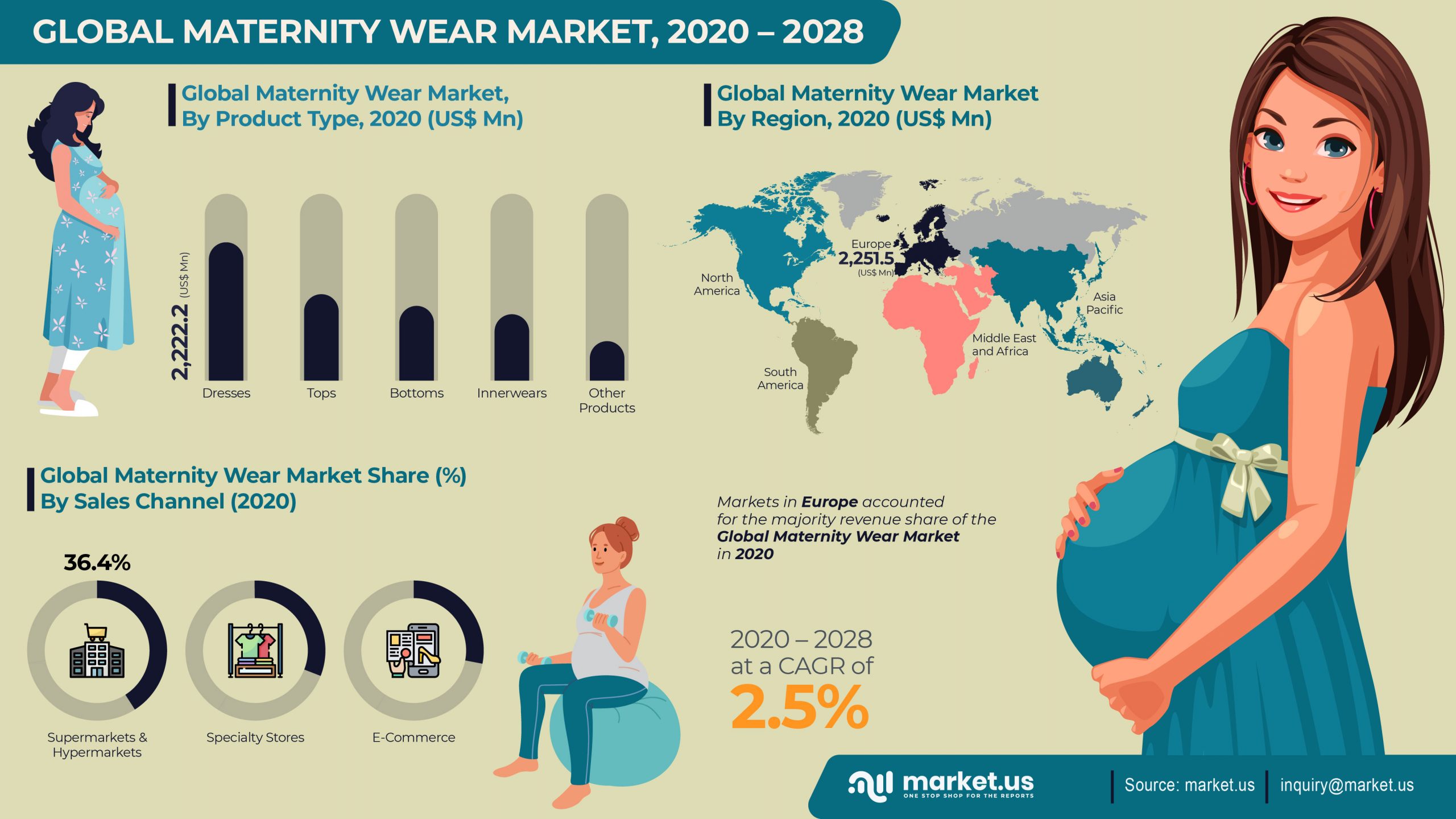
Global Maternity Wear Market Infographics Description:
- The global maternity wear market is estimated at US $ 6,504.6 Mn in 2020.
- The global maternity wear market is projected to reach US $ 7,937.8 Mn in 2028 at a CAGR of 2.5% from 2020 to 2028.
- Amongst product type, the dresses segment in the global maternity wear market is estimated to account for a majority revenue share of 34.2% by 2020 end.
- Among all the sales channel segments, the E-Commerce is expected to register the highest CAGR of over 3.2%, followed by supermarkets & hypermarkets.
- Europe market is expected to dominate the global maternity wear market. It is expected to account for the largest market revenue share than that of markets in other regions.
- Companies profiled in the report are Destination Maternity Corp., Reitmans (Canada) Limited {Thyme Maternity}, H & M Hennes & Mauritz AB (publ), The Gap, Inc., Arcadia Group Limited (Dorothy Perkins & Topshop), Seraphine Ltd, Task International B.V.(Noppies), boohoo group Plc and among others.





